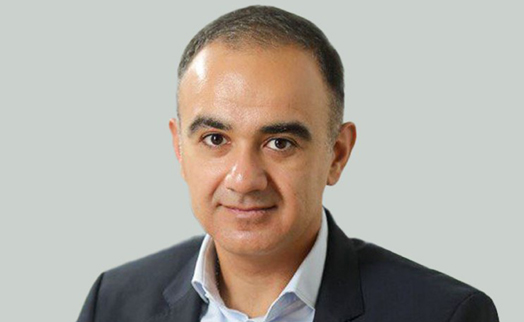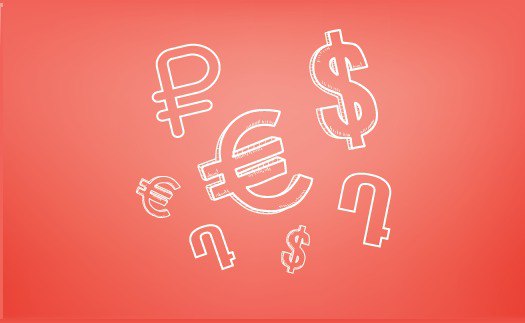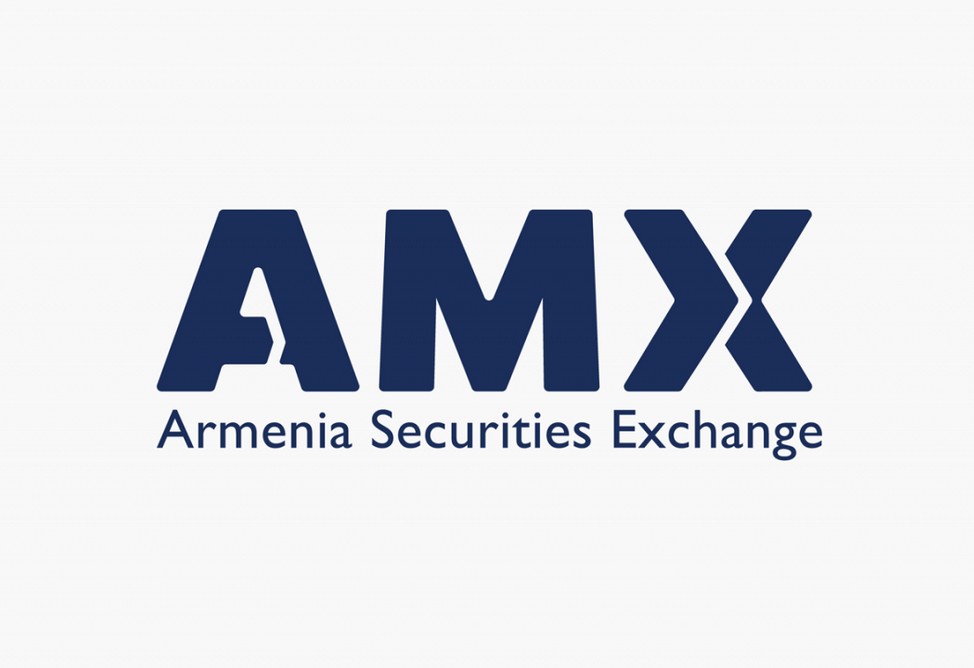YEREVAN, October 8. /ARKA/. Despite positive trends and emerging issues, experts observe that the capital market in Armenia continues to encounter several systemic challenges. The absence of a well-established underwriting system, limited engagement from international investors, and competition from banks impede its comprehensive development. Concurrently, new challenges and opportunities arise with the recent adoption of the law on crypto assets.
Hayk Yeganyan, CEO of the Armenia Securities Exchange, discussed with ARKA the prospects, risks, and opportunities for the Armenian capital market, innovative tools for managing digital assets, the role of exchange infrastructure in regulating the crypto market, and four essential conditions for Armenia to evolve into a regional financial hub.
Mr. Yeganyan, how do you assess the current state of the Armenian capital market?
Overall, the trend is positive, as the number of issues is growing, and the industry is also expanding. However, the number of issues is unsatisfactory—very few.
In your opinion, what is the reason?
The reason is that the industry of underwriting banks and investment banks, which should be interested in identifying players from economic sectors and encouraging them to issue, has, unfortunately, not yet developed in Armenia.
You spoke about this two years ago. So, nothing has changed in that time?
Nothing has changed at all from an underwriting perspective.
The fact is that we only have local issues; there are no international investors. There are some dollar bond issues that are either undervalued or overvalued. An Armenian corporate dollar bond cannot be more expensive or be on par with a US government dollar bond. This is because the industry has not yet been established. Is there a particular sector of the economy that demonstrates the greatest activity?
– Issuers are doing their own thing, each in their own business area. For a company to organize and execute an issue, it needs an underwriting bank to “take it by the hand,” guide it through all the stages, conduct analysis, and see it through to completion.
– So, there’s investor activity, but there’s no intermediary that could translate this activity into results?
– Potential issuers and investors exist. It’s always important to consider that 25% of deposits in the banking system can be converted into alternative investment products. There’s potential among investors, not only Armenian but also international.
Our goal is to create infrastructure. As our partners say, we build highways, connect cities with each other. But we’re not building factories. Factories exist, but there are no transport companies or intermediaries to sell the products. However, we’re not giving up and doing everything we can. Recently, for example, we’ve begun attracting Polish investment to Armenia, companies that will begin to show interest in Armenian issuers. If not in Armenia, then at least let them organize the issue abroad. We’re not opposed to that. Of course, it’s preferable for the issue to take place in Armenia, but if it’s organized abroad, then at least through our infrastructure. At least issuers will develop an appetite, their knowledge will increase, and they’ll be motivated to issue. We wouldn’t be opposed to that.
Of course, it’s not entirely desirable for investors to invest in other markets than Armenia, but if there aren’t good offers in your country, then at least let them invest, train, and improve their knowledge abroad.
– What steps are being taken to improve the financial literacy of the population? Perhaps banks should step up their activity?
– Banks are, in fact, competitors in the capital market, because their business model is to attract deposits and issue loans. As the capital market develops, deposits transform into direct investments in bonds and stocks.
In developed markets, for example, there are no universal banks. There’s J.P. Morgan with its various subsidiaries: investment banking, commercial banking, retail banking, wealth management (private banking – ed.), and so on.
In our country, we’re mostly universal commercial banks, with one or two exceptions. For example, Ameriabank recently decided to integrate its online banking program with our exchange. This was the first time a bank had consolidated its trading system with an exchange, giving clients the ability to view and trade on the exchange in real time without an intermediary. Thus, Direct Market Access, which appeared globally 25-30 years ago, has been implemented here, albeit belatedly.
– What results have you seen so far?
– Ameriabank’s clients conduct quite a lot of transactions in corporate bonds. So, the initial public offering is still weak, but at least there is liquidity in the secondary market. In terms of public engagement in the secondary market, Ameriabank has made a significant step.
Are other banks interested in following this path?
Banks whose strategy includes providing investment banking services to clients are showing some interest. But not all plan to become capital market banks. Expecting them to do so is a mistake: expecting the desired result from an inappropriate business is your fault, not theirs.
How do you assess the adoption of the “Cryptoassets” law in terms of its impact on the traditional capital market? Can we expect synergies or, conversely, competition between the crypto market and the stock exchange?
An exchange is a capital market infrastructure company. It can use the same infrastructure, including for the crypto market. Cryptocurrency can also become an element of the capital market if it becomes market-controlled.
The capital market is a money market. Money either goes to a bank and becomes a deposit, or goes into equity, a security, or crypto. All of these are components of the capital market.
An exchange and a depository are infrastructure companies. We should try to use infrastructure, including to meet the needs of the crypto industry. This way, we too can benefit and generate income.
We are currently considering the possibility of the depository also becoming a custodian of crypto assets. The law allows this. Whether we go ahead with this will depend on the risk appetite of our shareholders. We will, of course, express our desire to consider this direction as the future and a path for business development.
– In your opinion, to what extent is the European model, on which the law is based, adapted to the Armenian market?
– In my opinion, the approach is sound. The Central Bank has chosen the right path. Why reinvent the wheel if it already exists?
– Market participants are not very happy that the European model has been implemented.
– If they are dissatisfied, let them propose an alternative.
I know that the new European model is a good, logical model. The main issue here is oversight capabilities, as major risks could arise. For example, if there is fraud, will the regulatory authority have the capacity and skills to oversee it? Will the Central Bank oversee the sector or will a separate body be created? I don’t know, but I believe the most important thing is the means of control.
In general, when creating any new sector, the most important thing is to consider the regulator’s skills and capabilities. If you create a new sector but lack the skills, knowledge, experience, and human capital for oversight, it’s a failing sector from the start. If you have a law but lack the skills to use it effectively and attract interest, then either the law is bad, or you’re doing a poor job of generating interest.
Do you think Armenia has such skills?
I think Armenia has smart people, especially in the crypto space. I don’t know who will regulate and oversee it in the long term, but I’m confident that if we mobilize the potential of smart people, we can create a very good regulatory structure for the field.
Does the Armenia Stock Exchange plan to launch new tools or services for working with digital assets?
Yes, as do all exchanges worldwide. For example, if someone creates an ETF (Exchange-Traded Fund) investing in crypto assets, we would be happy to list it and allow it to trade.
Do you think Armenia has the potential to become a regional financial hub, including in the context of cryptotechnologies and fintech startups?
Such a prospect can be seen in any country, provided there is the desire and political will, as well as the mobilization of the necessary resources to implement them.
Let me give you an example of Kazakhstan. Kazakhstan, in terms of its legislative regulations, was much more bureaucratic than we are. But they had the desire and the will: they created the Astana International Financial Center: they hired the appropriate specialists, carried out reforms, drafted new laws, signed agreements and memorandums with various regulators, and invested billions of dollars in buildings, airports, and airlines. They had the desire and the will, the necessary knowledge and money. All this came together, and ultimately, the Astana International Financial Center was created.
Does Armenia currently have at least one of these four elements?
That’s a policy question, which I can only answer for our part. When I was CEO of Nasdaq OMX Armenia and later, when Nasdaq left, there was the desire and the will. Now I also see a desire to develop the capital market. This process consists of many components: laws, regulations, oversight, education, but infrastructure plays a key role.
We were called upon to find a good investor, a new shareholder, to help us create an infrastructure that would be independent of the rest of the world, yet connected to it. We did so, and it was welcomed by the authorities.
So I can say the momentum is positive, at least on our side. I can’t know what the political team wants, but we’re doing our job, and it’s appreciated.
– Finally, a few figures. What’s the current market capitalization? Is there a forecast for the end of the year?
– As of the end of September, capitalization was almost 455 billion drams. I can’t yet say what it will be by the end of the year. However, I will note that we have invited all companies providing investment services to accompany us to Abu Dhabi to promote Armenia’s investment opportunities. If the advertising campaign is successful, we could see results by the end of the year. We’ve had cases where successful advertising campaigns for Armenian securities abroad attracted significant investment.
So anything is possible; you just have to keep trying, keep trying, and keep developing. The world has become very competitive today, so it’s important to have innovative ideas and not be afraid to take risks.








